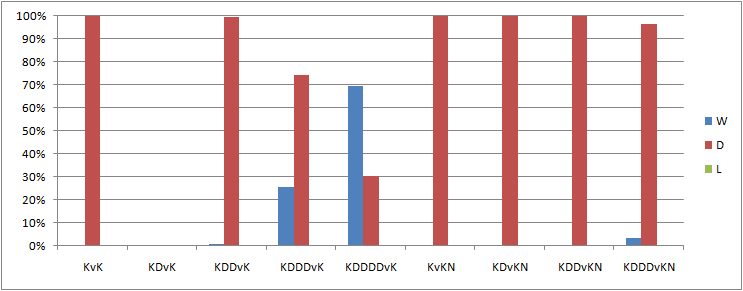The dabbaba is a '2,0' leaper fairy piece, only able to ever reach a quarter of the squares on the board. According to the linked Wikipedia page, a quartet of them can apparently "easily" force mate against a bare king with the help of their own king; however, I'm curious whether an orthodox knight could reliably hold off the dabbaba quartet. It's effectively a 7-piece endgame, just that 4 of the pieces are weaker fairy pieces; four '2,0' leapers that can each only reach a quarter of the squares on the board versus a single '2,1' leaper that can reach any square on the board.
As for the dabbaba's aforementioned restriction to a quarter of the squares on the board, a single dabbaba can reach either ACEG or BDFH files and either odd ranks or even ranks; making the 4 dabbabas of the quartet be the odd ACEG, even ACEG, odd BDFH, and even BDFH. Assuming the 4 dabbabas are to cover their respective quarters of the board, there should be ((16^4)/8)*(60!/(60-3)!)*2 meaningfully unique KDDDDvKN positions to look at minus any where side-to-move could just take the other side's king or is already checkmated by the other side.


